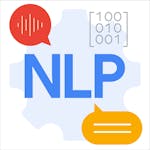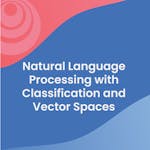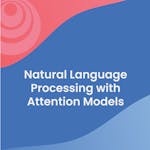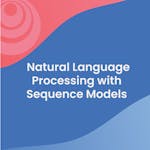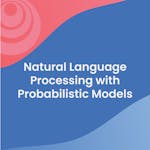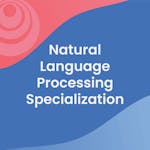Natural Language Processing (NLP) Definitions: A to Z Glossary Terms
Interested in natural language processing (NLP) but you keep seeing terms unfamiliar to you? This A-to-Z glossary defines key NLP terms you need to know.
Natural Language Processing (NLP) professionals actively develop, deploy, and maintain software applications specialized in processing and understanding human language. They leverage various programming languages, frameworks, and libraries to build NLP applications that interpret text, perform sentiment analysis, extract entities, and generate human-like responses. With a strong focus on testing and collaboration, NLP experts are crucial in advancing language-related technologies, enabling seamless interactions between machines and humans.
This NLP glossary can be helpful if you want to get familiar with basic terms and advance your understanding of natural language processing.
Natural Language Processing (NLP) Definitions: A to Z Glossary Terms
Interested in natural language processing (NLP) but you keep seeing terms unfamiliar to you? This A-to-Z glossary defines key NLP terms you need to know.
Natural Language Processing (NLP) professionals actively develop, deploy, and maintain software applications specialized in processing and understanding human language. They leverage various programming languages, frameworks, and libraries to build NLP applications that interpret text, perform sentiment analysis, extract entities, and generate human-like responses. With a strong focus on testing and collaboration, NLP experts are crucial in advancing language-related technologies, enabling seamless interactions between machines and humans.
This NLP glossary can be helpful if you want to get familiar with basic terms and advance your understanding of natural language processing.
Natural Language Processing Terms
Annotation
Annotation in NLP refers to adding specific labels or metadata to text data, such as part-of-speech tags, named entity recognition, sentiment scores, etc., to enable machine understanding and analysis.
Bag of Words (BoW)
Bag of Words is a simple text representation model in NLP that converts a document into a set of its constituent words, disregarding grammar and word order.
Corpus
A corpus is a large collection of text documents or spoken language data used for training and testing NLP models.
Dependency Parsing
Dependency parsing is the process of analyzing the grammatical structure of a sentence and identifying the relationships between words, represented as a dependency tree.
Embedding
Word embeddings are vector representations of words in a continuous vector space, used to capture semantic relationships between words and improve NLP model performance.
Feature Engineering
Feature engineering involves selecting and transforming relevant linguistic features from raw text data to create a suitable input for NLP models.
Grammatical Error Correction (GEC)
Grammatical Error Correction is an NLP task that automatically identifies and corrects grammar and spelling errors in text.
Hidden Markov Model (HMM)
Hidden Markov Model is a statistical model used in NLP to represent sequence data, such as part-of-speech tagging and speech recognition.
Information Retrieval
Information retrieval in NLP involves retrieving relevant information from a large collection of unstructured text data based on user queries.
Jaccard Similarity
Jaccard Similarity is a measure used to compare the similarity between two sets of words or documents based on their shared elements.
Keyword Extraction
Keyword extraction automatically identifies and extracts important keywords or phrases from a document to summarize its content.
Lemmatization
Lemmatization is reducing words to their base or root form to handle variations of the same word, such as singular/plural forms or verb tenses.
Machine Translation
Machine Translation is an NLP task that automatically translates text from one language to another using computational methods.
Named Entity Recognition (NER)
Named Entity Recognition is an NLP task focused on identifying and classifying named entities, such as names of people, places, organizations, etc., in text.
Ontology
An ontology formally represents knowledge, defining concepts, entities, and their relationships to enable better understanding and reasoning in NLP tasks.
Part-of-Speech (POS) Tagging
POS tagging assigns parts of speech (e.g., noun, verb, adjective) to each word in a sentence.
Question Answering
Question Answering is an NLP task that automatically generates accurate answers to questions posed in natural language.
Recurrence
Recurrence in NLP refers to using recurrent neural networks (RNNs) to process data sequences, making them suitable for language modeling and sequence generation tasks.
Sentiment Analysis
Sentiment Analysis is an NLP task focused on determining a text's emotional tone or sentiment, typically as positive, negative, or neutral.
Tokenization
Tokenization is breaking text data into individual units, such as words or subwords (n-grams), to facilitate further analysis in NLP tasks.
Unsupervised Learning
Unsupervised learning in NLP involves training models on data without explicit target labels, allowing the model to learn patterns and structures in the data independently.
Vector Space Model (VSM)
The Vector Space Model is a mathematical representation that transforms text documents into numerical vectors, enabling NLP similarity calculations and information retrieval.
Word Sense Disambiguation (WSD)
Word Sense Disambiguation is an NLP task focused on identifying a word's correct meaning or sense in context, particularly when the word has multiple possible interpretations.
XGBoost
XGBoost is a popular gradient-boosting library for supervised learning tasks, including NLP ones, to achieve high-performance models.
Zero-Shot Learning
Zero-Shot Learning in NLP involves training models to perform tasks they have not been directly trained in, allowing them to generalize to unseen data.
Conclusion
Congratulations on completing the A-to-Z glossary of Natural Language Processing (NLP) terms! Understanding these key concepts will empower you to explore the fascinating world of NLP and its applications in language understanding and generation. Whether you are a researcher, a developer, or a practitioner, this glossary will serve as a valuable resource to enhance your knowledge and proficiency in NLP. Happy learning and leveraging NLP's power to transform how we interact with and process human language!
Learn in-demand npl skills from industry leaders.
Artificial Intelligence Courses | Machine Learning Courses | Computer Vision Courses | Pytorch Courses | Chatbot Courses | ChatGPT Courses | Deep Learning Courses | TensorFlow Courses | Reinforcement Learning Courses | Neural Networks Courses | Sentiment Analysis Courses | Text Mining Courses
 Join a community of over 100 million learners from around the world
Join a community of over 100 million learners from around the world Learn from more than 200 leading universities and industry educators.
Learn from more than 200 leading universities and industry educators. 70% of all learners who have stated a career goal and completed a course report outcomes such as gaining confidence, improving work performance, or selecting a new career path.
70% of all learners who have stated a career goal and completed a course report outcomes such as gaining confidence, improving work performance, or selecting a new career path.- 100% online
- Flexible schedule
- Mobile learning
- Videos and readings from professors at world-renowned universities and industry leaders
- Practice quizzes
Can’t decide what is right for you?
Try the full learning experience for most courses free for 7 days.Register to learn with Coursera’s community of 87 million learners around the world

